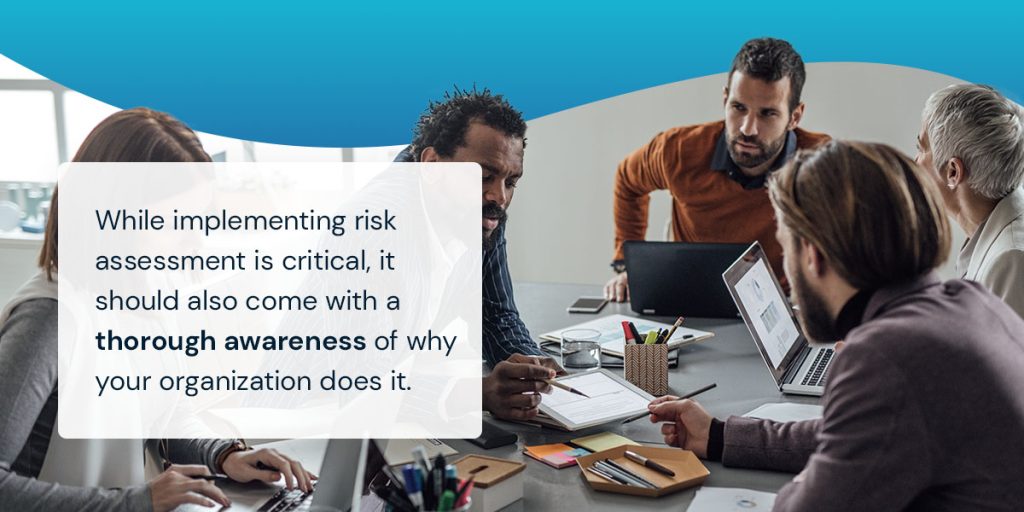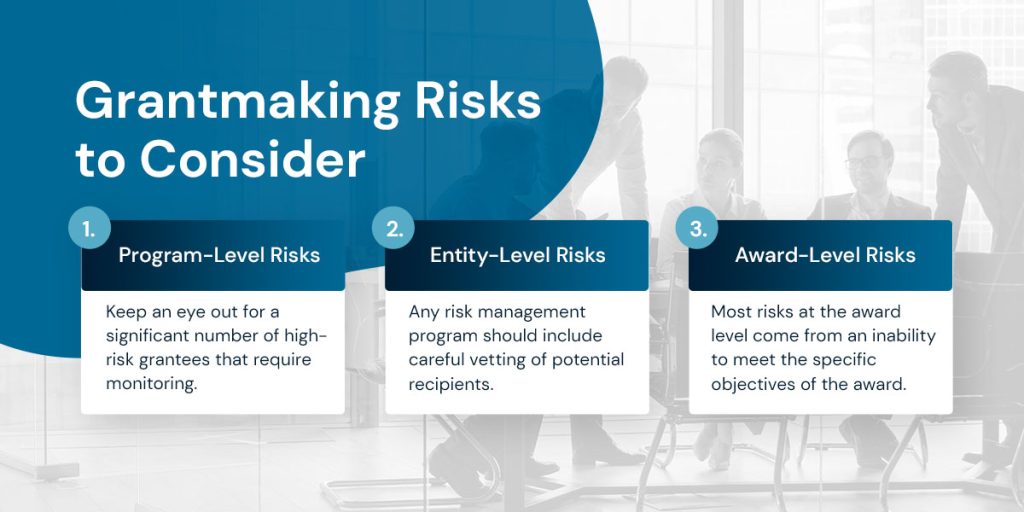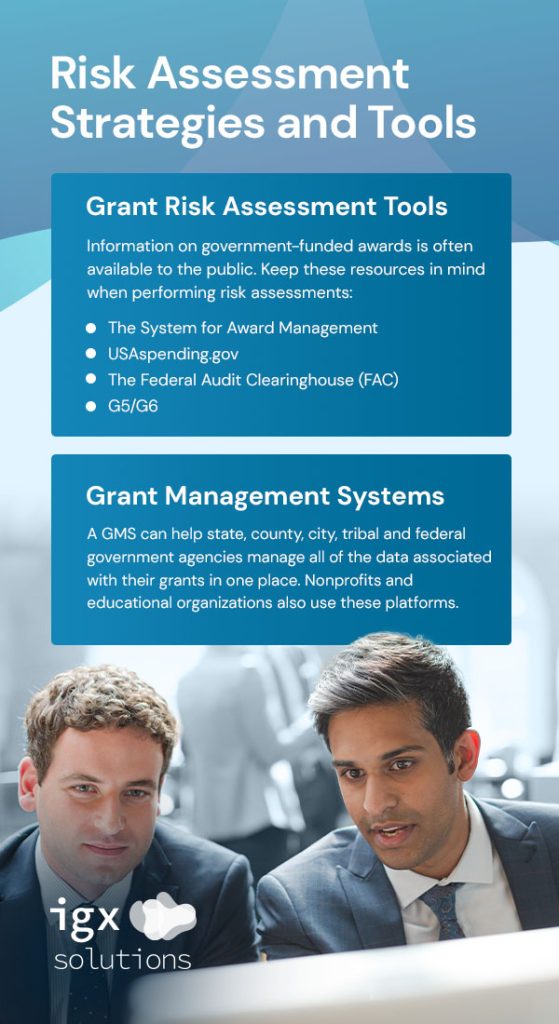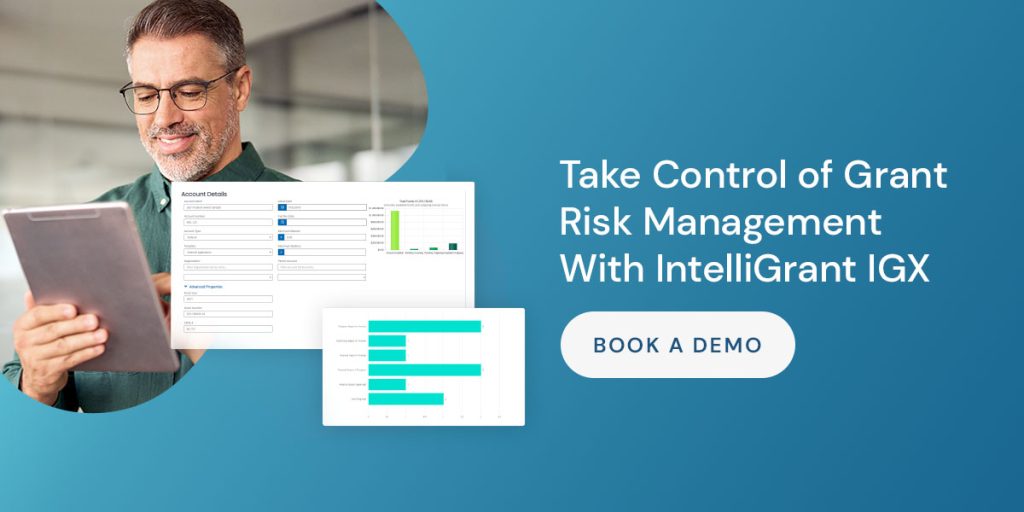
Grantmakers have a unique responsibility to ensure the funds they disperse do as much good as possible. Risk assessment plays a crucial role in achieving this goal, and it’s often required for organizations dispersing federal funds.
Still, the guidelines can vary widely. We’ve built a risk assessment guide to help grantmakers dive into what risk assessments look like, how to assess grant risks and how grant management systems can help.
Risk management has long been a staple of modern businesses, assessing and making plans for risks in various categories, such as financial, technical and organizational risks. In grantmaking, risk management’s primary purpose is to avoid events that would prevent the organization from advancing its policy goals when disbursing funds. If risks go unidentified and unmanaged, the grant program is less likely to reach its intended outcomes.
To avoid this situation, grantmakers develop risk management programs to offer tools, strategies and structures for assessing potential grant recipients. A disorganized approach to risk management can be detrimental to the program’s goals. Fortunately, many state, federal and local agencies have created resources and guidelines to make things easier.
Some areas of risk these programs might address include:
When choosing resources and developing an approach, remember that risk management is an ongoing process. Risks are constantly evolving, and new resources are always created. You will need to revisit your strategy regularly to ensure it stays up-to-date and relevant.
Assessing the risk associated with awarding funds is essential to performing due diligence. Without it, you may end up awarding funds to an irresponsible organization that misuses the funds, whether intentionally or unintentionally. Adverse outcomes can do much more than slow down your progress toward reaching goals — they can also hurt your credibility, impacting your ability to disperse funds in the future.
In helping mitigate these events, risk assessment offers several valuable benefits, such as:

While implementing risk assessment is critical, it should also come with a thorough awareness of why your organization does it. Stakeholder buy-in is particularly important when addressing common risk assessment challenges, such as empowering staff with a good management platform and addressing competing priorities. Having everyone on the same page can help you tackle risk assessments with a cohesive, well-aligned strategy.
Federal, state and local governments often implement risk assessment requirements for the organizations awarding their funds. These requirements may not always be specific, but you must abide by them to maintain compliance.
The most ubiquitous requirement you’ll find is the Uniform Guidance, which refers to the Uniform Administrative Requirements, Cost Principles and Audit Requirements for Federal Awards. This regulation outlines guidance for pre-award risk assessment and covers areas like performance reporting, sub-recipient monitoring and audit requirements.
Grantmakers must assess various characteristics of a potential recipient:
Program-specific data, such as size, complexity and award size, are also commonly considered. The Uniform Guidance allows grantmakers to impose conditions for an award, like reimbursements instead of advance payments, prior approvals and additional financial reporting requirements.
Within the education industry, you may also encounter the Education Department General Administrative Regulations, which outline how education funds can be used.
In today’s digital environment, you’ll also find legislation about how you handle data. This legislation includes:
Common risks associated with grantmaking can be broken down into these three categories:

Program-level risks are associated with the grant program as a whole and are usually related to being unable to meet the grant objectives. Keep an eye out for a significant number of high-risk grantees that require monitoring. You’ll also want to consider your team’s experience with the program. If it’s new or you’ve made big changes, you may want to take extra measures to prevent problems.
Despite being separate organizations, your grantees can create considerable risk. Any risk management program should include careful vetting of potential recipients. Consider ranking your applicants on factors like:
Some features that might point toward a high-risk grantee include a history of poor performance in meeting award goals, financial instability, a track record of questionable business practices or poor management systems. If you have a high-risk grantee, you could mitigate risks by imposing special conditions.
Most risks at the award level come from an inability to meet the specific objectives of the award. When reviewing specific awards, consider how much progress each recipient achieves toward the award objectives. Compare planned and actual spending, and review audit results to monitor success.
When conducting risk assessment, most of your work will happen before awarding the grant, while assessing individual applicants and the program itself. You can also use information collected throughout a program to inform your decisions for next time.
For example, monitoring and documentation can tell you whether high-risk grantees reached their goals with an award. If not, you could cut back on the number of high-risk recipients next time or implement special conditions to ensure the effective use of funds.
However you choose to perform these tasks, structure and clarity are crucial. You must keep track of your risk management activities and identify a standardized method for assessments. Fortunately, many different groups have created assessment resources, and your grant management system (GMS) can help with tracking and organization.

Starting with individual assessments, you’ll find various resources to inform and guide your evaluations of applicants. Most requirements, like the Uniform Guidance, allow you to find an approach that works well for your organization.
Information on government-funded awards is often available to the public. Keep these resources in mind when performing risk assessments:
Many grantmakers use scorecards to combine collected information into an easy-to-use, objective value. Higher numbers correspond to increased risk. This approach puts risk assessment for grants into a step-by-step, standardized process.
For overarching risk management, you will likely need a dedicated program for grant management. A GMS can help state, county, city, tribal and federal government agencies manage all of the data associated with their grants in one place. Nonprofits and educational organizations also use these platforms.
Alongside tools for workflow automation and streamlined processes, a GMS can facilitate assessments, reporting, monitoring and application processing so nothing slips through the cracks. In today’s modern business environments, paper-based files or spreadsheets are simply outdated and often not enough to meet administration requirements. With a GMS, you can greatly improve visibility and process controls while working more efficiently.
Of course, if you want a GMS to help you with risk management and assessment, it must have the right capabilities. Your program should help you personalize your grant applications, coordinate and review workflows and provide advanced monitoring and reporting tools.
IntelliGrants® IGX is a GMS designed to support the entire lifecycle of a grant and the grantmaking process. With a wide range of resources and a user-friendly interface, this platform facilitates comprehensive risk assessment.
Some of the risk management and assessment tools in IntelliGrants IGX include:
All of these risk management resources are available through your web browser, with an accessible design to accommodate users of all abilities. Our no-code program offers extensive personalization and branding capabilities. It supports your organization in whatever the future holds, with baked-in scalability, automation tools and regular software upgrades.

Grant programs involve many moving parts, and a well-structured approach to risk management is crucial. Now that you’ve finished our guide to risk assessments in grantmaking, you’re well-prepared to tackle these requirements and build a high-quality program.
IntelliGrants IGX is on your side with an array of risk management and assessment tools. We’ve been in the business for over 35 years and hold a 98% retention rate. As a Microsoft Gold Partner and General Services Administration contractor, IntelliGrants IGX is a trusted provider for governments, nonprofits and educational groups across the country.
Book your demo below to see why so many organizations trust IntelliGrant IGX!